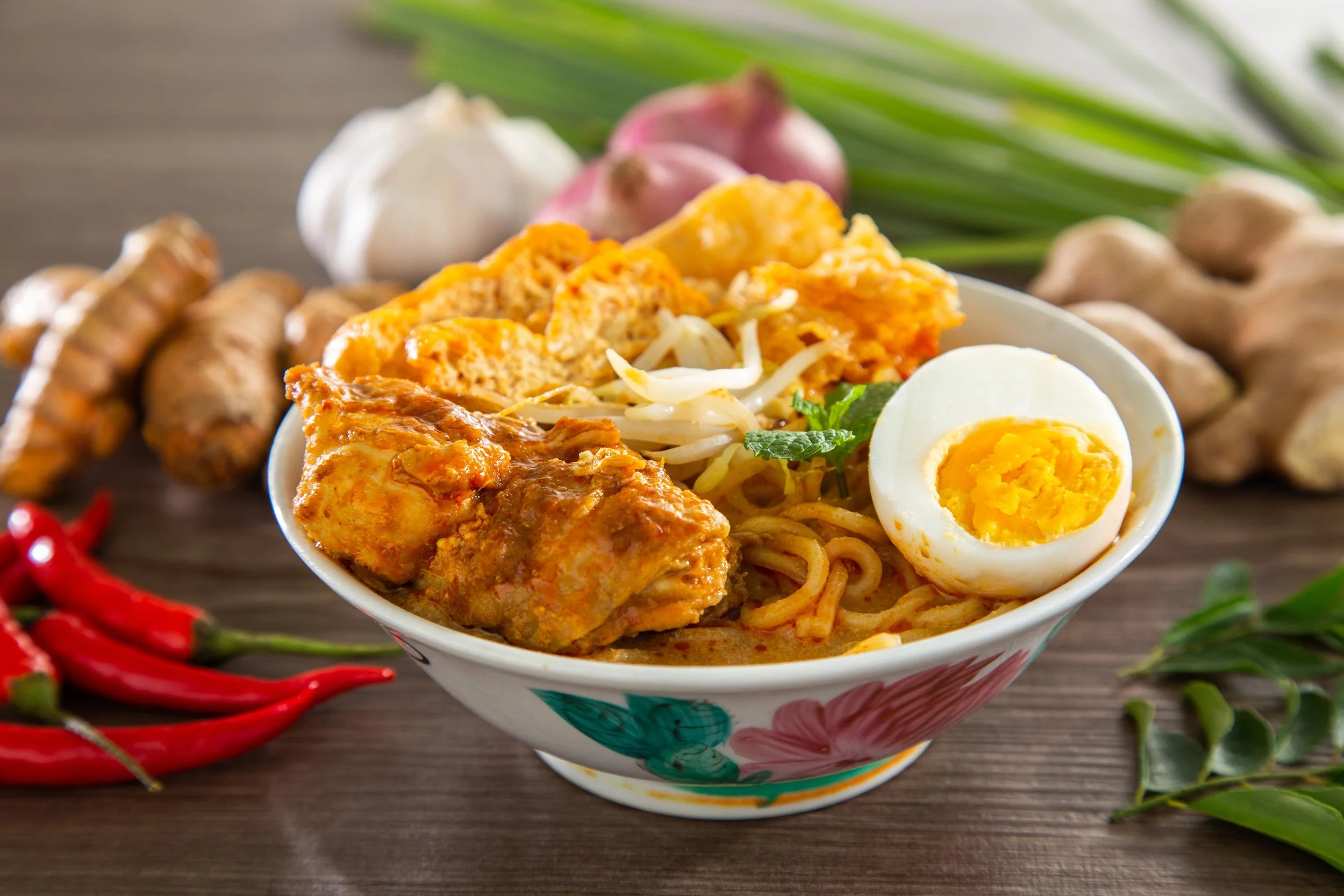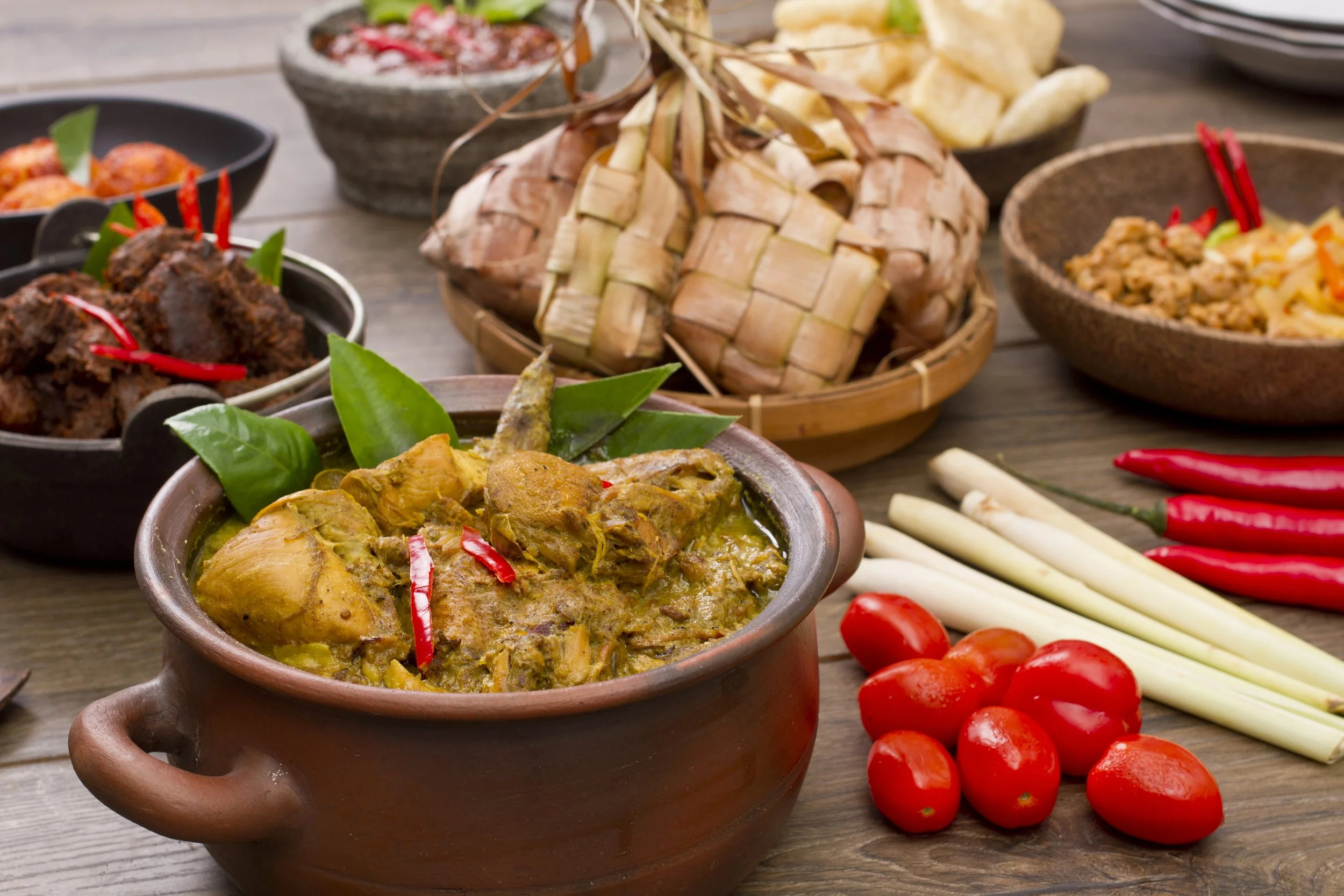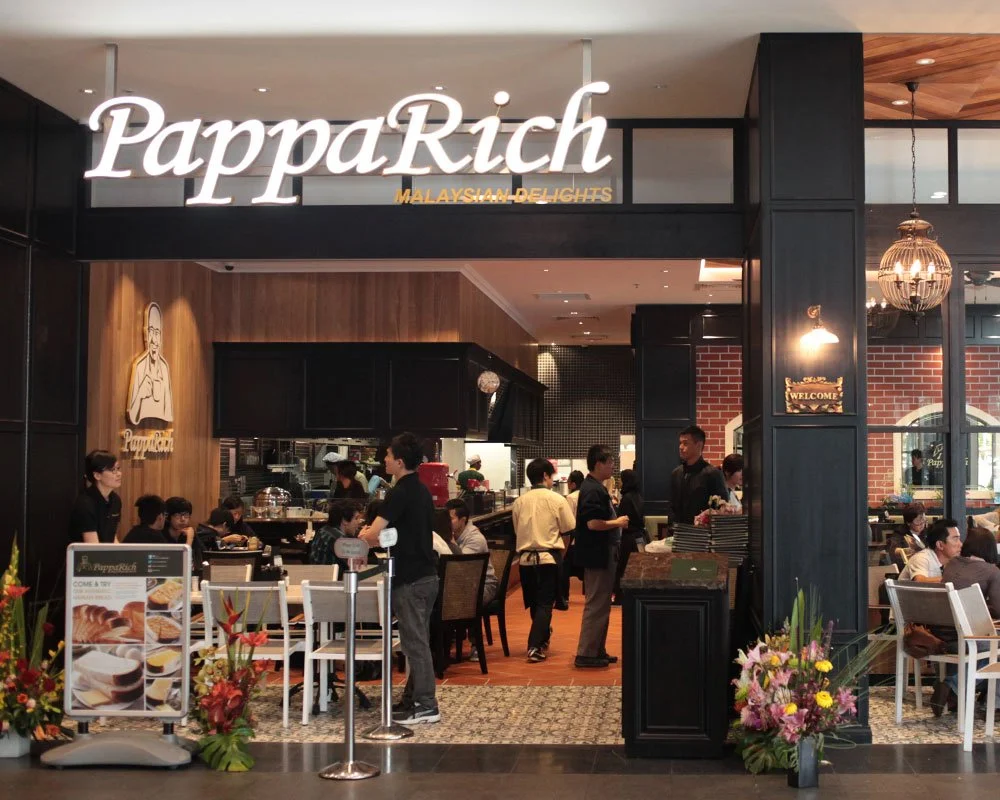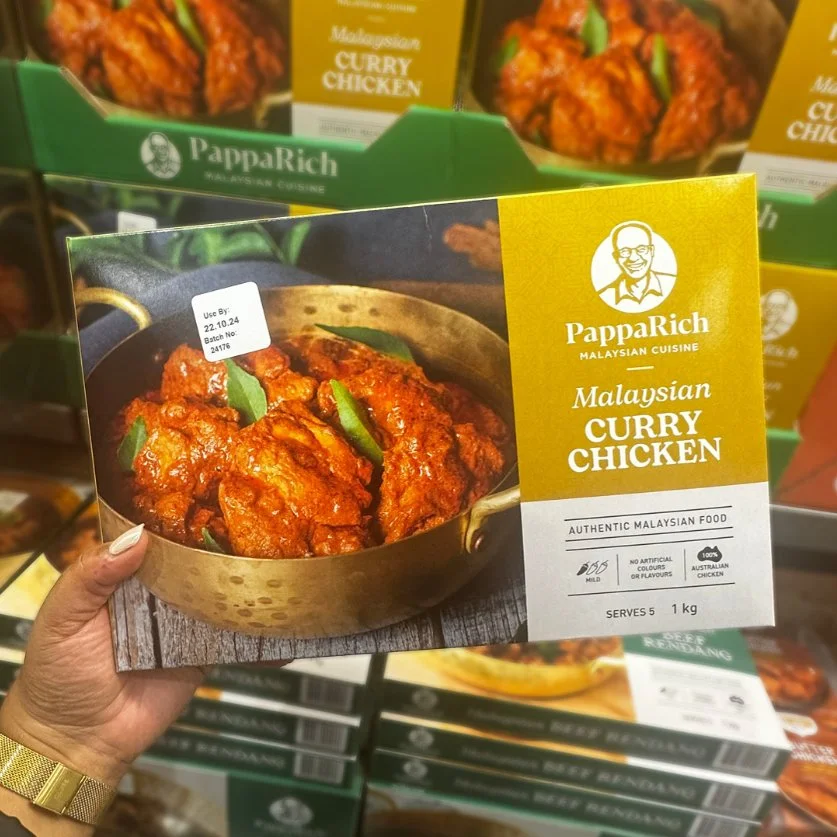Exploring Malaysia's Diverse National Cuisine
Malaysia is a vibrant tapestry of cultures, each contributing its unique threads to the nation's rich culinary landscape. A Southeast Asian country is known for its diverse national cuisine. It is a delightful mix of Malay, Chinese, Indian, and indigenous influences. Whether you're a seasoned foodie or a curious traveler, Malaysia's traditional dishes promise an unforgettable culinary journey. In this article, we will explore Malaysia's national food. We will delve into local delicacies and discover what makes these dishes special.
What is the National Food of Malaysia?
While Malaysia boasts an array of mouth-watering options, the title of national dish often goes to Nasi Lemak. This beloved dish is a staple in Malaysian cuisine and is cherished by locals and visitors alike. Nasi Lemak, which translates to "rich rice," is traditionally served as a breakfast dish but can be enjoyed any time of the day.
Nasi Lemak: The Heart of Malaysian Cuisine
Nasi Lemak is a simple yet flavorful dish, consisting of rice cooked in coconut milk, which gives it a rich and creamy texture. The rice is usually served with sambal, a spicy chili paste. It is also accompanied by crispy fried anchovies, toasted peanuts, a boiled egg, and cucumber slices. The dish can also be served with additional sides such as fried chicken, beef rendang, or squid sambal.
The secret to a great Nasi Lemak is in the balance of flavors. Sweet, spicy, savory, and creamy elements blend to create a truly satisfying meal. Each component of the dish plays a crucial role in achieving this balance. The sambal offers a spicy kick, while the coconut-infused rice provides a soothing contrast. The crunchy texture of the fried anchovies and peanuts adds a delightful crunch, enhancing the overall experience.
The Cultural Significance of Nasi Lemak
Nasi Lemak is more than just a dish; it is a symbol of Malaysian identity. As a ubiquitous presence at roadside stalls, markets, and restaurants, it reflects the country's diverse culinary heritage. The dish is a testament to Malaysia's ability to blend various cultural elements into a cohesive and delicious whole. For many Malaysians, Nasi Lemak evokes memories of home, family gatherings, and the comforting taste of familiar flavors.
The Evolution of Nasi Lemak
Over the years, Nasi Lemak has evolved to incorporate a variety of modern twists. Chefs across Malaysia experiment with ingredients and presentation, adding contemporary flair to this traditional dish. Fusion versions include accompaniments like grilled prawns, lamb curry, or even vegan alternatives. Despite these innovations, the essence of Nasi Lemak remains unchanged, continuing to captivate palates with its classic taste.
Other Iconic National Dishes of Malaysia
While Nasi Lemak holds the title of national dish, Malaysia's culinary repertoire extends far beyond this singular delight. Let's explore other traditional dishes that define the Malaysian dining experience.
Roti Canai: A Breakfast Favorite
Roti Canai, a dish with Indian roots, is a type of flatbread that is crispy on the outside and soft on the inside. It is usually served with dhal (lentil curry) or a variety of curries. Roti Canai is a popular breakfast choice and is loved for its flaky texture and versatility.
Roti Canai's preparation is an art form, involving skillful kneading and flipping to achieve its signature layers. The dough is stretched thin and folded multiple times before being cooked on a hot griddle. This process creates its iconic flaky and light texture, making it a perfect vessel for soaking up flavorful curries.
Variations and Accompaniments
Roti Canai can be enjoyed in numerous ways. Some prefer it plain, savoring the buttery richness, while others opt for fillings like egg, cheese, or bananas. Accompanying dips can range from spicy sambal to tangy pickles, allowing diners to customize their experience. This versatility makes Roti Canai a beloved choice for breakfast, lunch, or even a late-night snack.
The Cultural Significance of Roti Canai
Roti Canai is not just a meal; it's a communal experience. Often enjoyed at bustling mamak stalls, it brings people together over shared plates and lively conversations. The dish symbolizes Malaysia's multicultural society. It reflects the Indian influence that is now a key part of the nation's culinary identity.
Satay: A Grilled Delight
Another favorite is Satay. It consists of skewered and grilled meat, typically chicken, beef, or lamb. It is served with a delicious peanut sauce. The meat is marinated in a blend of spices, providing a burst of flavor with every bite. Satay is often enjoyed as a snack or appetizer and is a must-try for anyone visiting Malaysia.
The preparation of Satay is a true labor of love. Marination often takes several hours, allowing the meat to absorb a rich blend of spices. Common marinade ingredients include turmeric, coriander, lemongrass, and garlic. This combination creates a fragrant aroma that tantalizes the senses as the skewers grill over an open flame.
Regional Variations of Satay
Satay varies across Malaysia, with each region offering its unique take on this classic dish. In the southern state of Johor, Satay is often sweeter, incorporating ingredients like honey and coconut milk. Meanwhile, in the northern regions, the focus is on spicier, more robust flavors. These regional differences highlight the diversity and creativity present in Malaysian cuisine.
Satay: A Social Experience
Satay is more than just a dish; it's a cultural experience. Often served at festivals, markets, and family gatherings, it plays a central role in social celebrations. The act of grilling Satay is a communal activity, with friends and family coming together to savor the delicious skewers and indulge in the rich, nutty peanut sauce.
Laksa: A Soup of Many Faces
Laksa is a spicy noodle soup with various regional variations. Two of the most famous types are Curry Laksa, which has a coconut milk base, and Asam Laksa, known for its sour tamarind flavor. Each type of Laksa offers a unique taste experience, showcasing Malaysia's diverse culinary influences.
Curry Laksa features a creamy, aromatic broth, infused with spices like turmeric and lemongrass. Its richness is balanced by toppings such as bean sprouts, tofu puffs, and seafood, creating a symphony of flavors in every spoonful. In contrast, Asam Laksa boasts a tangy, fish-based broth, with mackerel, pineapple, and mint lending their distinct flavors to the dish.
Regional Variations of Laksa
Across Malaysia, Laksa takes on different forms, influenced by local ingredients and cultural traditions. In Penang, Asam Laksa reigns supreme, with its bold, tangy flavors attracting food enthusiasts from around the world. Meanwhile, in the capital city of Kuala Lumpur, Curry Laksa is a favorite, known for its rich and comforting qualities.
The Cultural Significance of Laksa
Laksa is a beloved dish that resonates with Malaysians from all walks of life. It represents the fusion of various culinary traditions, reflecting the country's history of trade and migration. Enjoyed at hawker centers and high-end restaurants alike, Laksa is a testament to Malaysia's ability to embrace and celebrate its multicultural heritage.
Local Delicacies Worth Trying
Beyond the national dishes, Malaysia offers an array of local delicacies that reflect its multicultural society. Here are a few that you should not miss:
Char Kway Teow: A Street Food Staple
Char Kway Teow is a beloved street food dish featuring flat rice noodles. These noodles are stir-fried with shrimp, Chinese sausage, eggs, and bean sprouts. The ingredients are all combined in a savory soy sauce. This dish is a favorite among locals, celebrated for its smoky flavor. This unique taste comes from cooking over high heat in a wok.
The art of making Char Kway Teow lies in the mastery of "wok hei," or the breath of the wok. This technique involves cooking ingredients at high temperatures to infuse them with a distinct, smoky aroma. The result is a dish that is both flavorful and aromatic. Each bite provides a delightful mix of textures and tastes.
Regional Variations of Char Kway Teow
While the basic ingredients of Char Kway Teow remain consistent, regional variations abound. In Penang, the dish is often spicier, with the addition of chili paste and more seafood. In contrast, the Kuala Lumpur version is slightly sweeter, incorporating dark soy sauce and additional vegetables. These variations highlight the adaptability of Char Kway Teow, allowing it to cater to different palates.
The Cultural Significance of Char Kway Teow
Char Kway Teow is more than just a meal; it's a cultural icon. Often found at lively street stalls, this dish showcases the vibrant street food culture central to Malaysian life. It captures the essence of Malaysia's diverse culture. The country's food combines elements from Chinese, Malay, and Indian cuisines. This blend creates a harmonious mix that reflects its multicultural society.
Rendang: A Flavorful Feast
Rendang, typically prepared with beef, is a slow-cooked dish. It simmers in coconut milk with lemongrass, galangal, garlic, turmeric, ginger, and chilies. This lengthy cooking process allows the flavors to blend beautifully. The result is a rich and tender dish that truly celebrates Malaysian spices.
The preparation of Rendang is a meticulous process, requiring patience and precision. The meat is slow-cooked for hours, allowing it to absorb the complex flavors of the spices. The result is a deeply flavorful dish, with tender, melt-in-your-mouth meat that is both hearty and satisfying.
Variations and Regional Twists
Rendang is a versatile dish, with variations found across Malaysia. In the state of Kelantan, the dish is often sweeter, with the addition of palm sugar. Meanwhile, in Negeri Sembilan, the focus is on spicier, more robust flavors. These regional differences showcase the variety of Malaysian cuisine. Each version presents its unique interpretation of this classic dish.
The Cultural Significance of Rendang
Rendang is more than just a dish; it's a culinary treasure. Often served at special occasions and celebrations, it is a symbol of hospitality and tradition. The dish represents the rich diversity of Malaysian culture. Its blend of spices and flavors showcases the country's varied heritage.
Exploring PappaRich: A Gateway to Malaysian Cuisine
For those seeking to experience Malaysian cuisine outside of Malaysia, PappaRich offers an authentic taste. This restaurant captures the essence of the country's rich culinary heritage. This popular Malaysian restaurant chain is renowned for its extensive menu. It features a variety of national dishes and local delicacies that we have previously discussed.
What Makes PappaRich Special?
PappaRich prides itself on serving high-quality, authentic Malaysian food in a comfortable and welcoming environment. The restaurant's dedication to keeping traditional recipes alive, while providing a modern dining experience, attracts both locals and international visitors.
PappaRich's extensive menu highlights the finest of Malaysian cuisine. It showcases well-known dishes such as Nasi Lemak and Roti Canai. It also includes lesser-known treats like Hainanese Chicken Rice. Each dish is meticulously prepared, using fresh ingredients and traditional cooking methods to ensure an authentic taste.
PappaRich in Canberra, Australia
The Global Reach of PappaRich
With locations in countries around the world, Papparich brings the flavors of Malaysia to an international audience. The restaurant chain's global reach enables it to share Malaysia's rich culinary heritage with many people. This international growth shows the universal appeal of Malaysian cuisine. Its bold flavors and diverse influences connect with diners around the world.
A Modern Dining Experience
PappaRich offers more than just a meal; it's a dining experience. The restaurant's contemporary design and attentive service create a welcoming atmosphere, making it an ideal destination for casual dining and special occasions alike. Papparich's commitment to quality and authenticity ensures that every visit is a memorable culinary journey.
Embrace the Culinary Diversity of Malaysia
Malaysia's national cuisine reflects its rich cultural diversity. It offers a wide range of flavors and textures that delight the senses. From the iconic Nasi Lemak to the beloved street food Char Kway Teow, each dish tells a story. These dishes showcase Malaysia's vibrant heritage and the harmonious blend of its many cultural influences.
Whether you are exploring the vibrant streets of Kuala Lumpur or dining at an international Papparich location, Malaysia's flavors provide a remarkable culinary experience. Indulge in these traditional dishes. Let the taste of Malaysia transport you to a land rich in culture and culinary delights.
PappaRich's Malaysian Curry Chicken in package at Costco.
The Importance of Food in Malaysian Culture
Food is more than just sustenance in Malaysia; it is a way of life. Meals are a time for families and friends to come together, share stories, and strengthen bonds. The country's diverse cuisine showcases the harmonious blend of its many ethnic groups. Each group adds unique flavors and traditions to the national dishes.
A Call to Explore
For those who have not yet tasted Malaysian cuisine, now is an excellent time to begin this culinary journey. Whether you're a seasoned traveler or a curious foodie, Malaysia's diverse dishes offer something for everyone. From the rich, creamy textures of Nasi Lemak to the bold, spicy notes of Laksa, each bite is a journey into the heart of Malaysia's vibrant culture.
Savor the Journey
As you explore Malaysia's diverse national cuisine, take time to savor each dish and appreciate the stories they tell. From the vibrant streets of Penang, the flavors beckon. They invite you to experience a world of culinary delight. At Papparich, the warm atmosphere enhances this journey. Let your taste buds explore the rich tapestry of flavors that await you. Embrace the richness of Malaysia's culinary heritage, and discover the magic that lies within each delicious bite.
Explore the top 40 culinary delights of Malaysia. These highlights are featured by CNN Travel. Discover what you may have overlooked. Share in the comments below which Malaysian dish piques your interest. You might find that PappaRich nearby could feature that dish on our menu.
Street of Penang
Experience Malaysia’s National Dish at PappaRich!
Savor the iconic Nasi Lemak—Malaysia’s beloved national dish! Our version stays true to tradition: fragrant coconut rice, fiery sambal, crispy anchovies, and toasted peanuts, served with your choice of succulent fried chicken or 48-hour slow-cooked Beef Rendang.












